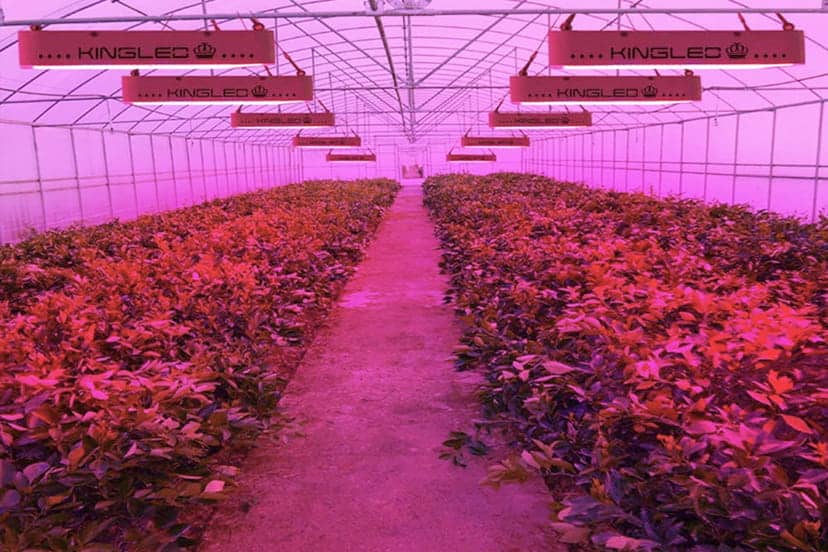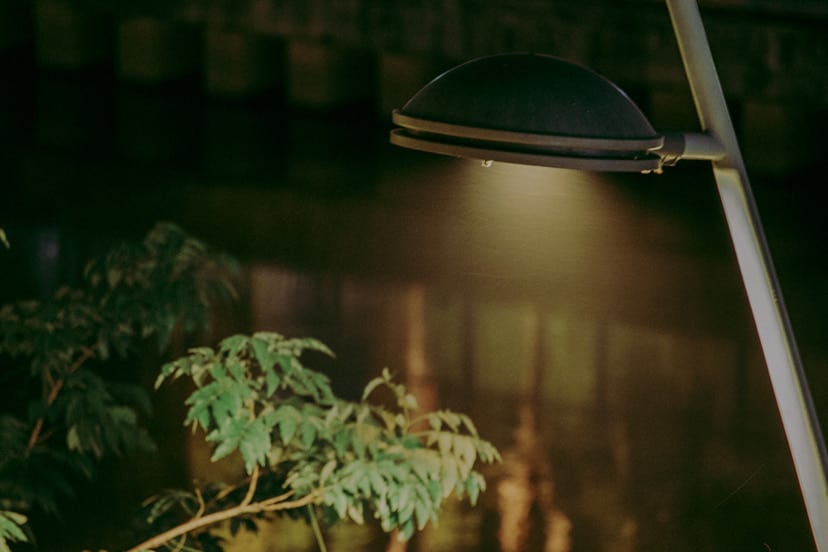Did you know that you can successfully grow a garden from inside your home? Indoor gardening has truly never been easier now that there are options for supplemental grow lighting. While you should still try to position plants within your home so they get natural, direct sunlight, we understand that in some cases this just isn’t possible. Hence the creation of grow lights for indoor plants!
Grow lights mimic natural sunlight so you can’t just choose any old lightbulb, place your plants under them, and call it a day. These lights stimulate photosynthesis and create the right color spectrum that allows your plants to thrive. Plant lights also allow you to grow plants during their offseason as both the light source and temperature can be controlled indoors. We’re going to take you through how to choose the best grow lights for indoor plants so you can get started right away.
How to Choose a Grow Light
There are a couple of options to choose from in terms of grow lights. They are:
- Replacing an existing light bulb in a lamp you already own with a grow bulb.
- Purchasing an entirely new fixture that already has built-in lighting (and was therefore made for this exact purpose).
The Grow Bulb
- Faster and Healthier Growing --- SANSI Full Cycle grow bulbs come with an optical lens, so the light is evenly distributed. There is no need to use lamp shade. Grow Light perfectly imitates sunlight, help the plants grow faster (2 weeks make a difference) and better in a healthy way. Good for plants from seeding stage.
- Easy to Install --- Fits standard E26 socket, just screw into your desk lamp, no special lamp-base necessary. Recommended coverage area up to 2.8 square feet mounted 12”-20” above the plants, lighting time up to 10hrs-12hrs, depends on different plants.
- Full Spectrum --- Compared with other grow lights, SANSI each led chip mixes all wavelengths. All wavelengths of light can be fully absorbed by plant photosynthesis without any waste like fluorescent. Blue-Ray (400-499nm) is good for taller and healthy leaf. Red-Ray (600-699nm) is good for blooming and fruits.
- Great Heat Dissipation and Long Life --- Compared with other grow lights, ceramic body dissipates heat more efficiently than aluminum and is not conductive to electricity, LED chips are placed directly onto the ceramic heat sink, both are designed to control noticeable heat, keep your plants from hurt.
- What You Get --- 5-year unlimited warranty; 30 days no question asked return policy; High quality product; 24/7 friendly customer support.
Prices pulled from the Amazon Product Advertising API on:
Product prices and availability are accurate as of the date/time indicated and are subject to change. Any price and availability information displayed on [relevant Amazon Site(s), as applicable] at the time of purchase will apply to the purchase of this product.
If you’re looking to save money, grow light bulbs are also an easier and more convenient option. All you need to do is take a lamp that you’re not currently using, switch out the bulb, and replace it with a grow bulb – done!
Grow light bulbs range in price but a single bulb can generally be bought for $20 or less – as is the case with the SANSI 15W LED Grow Light.
The Grow Light Fixture
- ✔【CRI 95+ Full Spectrum】Monios-L 4ft led grow light with the full spectrum between 380-800nm, is the professional sunlight replacement for indoor plants.The 60W ultra bright leds provide high PPFD ( photosynthetic photon flux density ), perfect for seedling, vegetative and flowering cycle.
- ✔【Eyes protection】This grow light are suitable for planting plants in any indoor application. 2900K color temperature makes your eyes feel comfortable. It works extremely well for your plant grow tents, plant grow shelves, seedling cultivation, succulents, hydroponic rooms, greenhouses, etc.
- ✔【Excellent heat dissipation】The light efficiency can be increased by 17~20% with reflector. The shell of our light was made of 100% aluminum which provides the high-efficiency heat dissipation. Ensuring the longer service life of the led chips.
- ✔【Easy to install】Ceiling or Hanging installation. Plug and play, no wiring and reconstructing needed.
- ✔【Quality after-sales service】12 months warranty 100% money back. Contact us for an easy and fast replaceme
Prices pulled from the Amazon Product Advertising API on:
Product prices and availability are accurate as of the date/time indicated and are subject to change. Any price and availability information displayed on [relevant Amazon Site(s), as applicable] at the time of purchase will apply to the purchase of this product.
Purchasing a grow light fixture that is specifically meant for this purpose really makes a difference to your plant’s growth. They disperse light evenly and provide a fuller light spectrum than a single grow lightbulb would. While a grow light fixture is certainly more expensive than a grow lightbulb, they won’t break the bank. The Monios-L T5 LED Grow Light is a four-foot integrated fixture with a rope hanger that looms over your plants. It’s aesthetically pleasing, easy to install, and lets people know you mean business when it comes to your indoor garden.
Are There Variations of Grow Lights?
There are three main variations of grow lights. They are:
1. The Incandescent Grow Light
The incandescent grow light is the cheapest of these three options but it’s also the least effective. This type of grow light also takes up a great deal of energy and gets hot easily.
2. The Fluorescent Light
The fluorescent light is the second-best option when it comes to grow lights. Moderately priced, it has a low heat signature and produces a decent spectrum of light. Plus, it is more energy-efficient than the incandescent grow light.
3. The LED Light

The LED grow light is the best choice next to natural light when it comes to growing an indoor garden. LED lights are color optimized for growth, containing a specified amount of red and blue lights as well as white LED and IR. They are also the most energy efficient and effective of the three and don’t put out a lot of heat. The highest quality grow bulbs and grow light fixtures always contain LED lights.
There are two other types of grow lights but you generally only see them in commercial use. The first is known as High-Intensity Discharge (HID) bulbs, which use tungsten electrodes inside a tube fused with alumina to produce light. These bulbs have a high light output level which is ideal for commercial use.
The other is Metal Halide plant lights which create a powerful light source using mercury vapor mixed with metal salts.
While these two types of grow lights do exist, neither of them is practical beyond commercial use.
Why Are Grow Lights Different Colors?
Plant lights often come in different colors. They’re either violet-blue, red, or white. Different color lights help your plants to achieve different goals, ranging from chlorophyll absorption and photosynthesis to flowering and budding.
Because of this, it’s not ideal to have a blue-violet light or a red light on your plants all of the time. It’s important to either regularly switch this up or to purchase a white light that mixes all the colors of the spectrum which seems like the most practical option.
- Instant-start energy saving
- Mounting on standard household outlet
- Will mount on standard household fixture
- 45 Watt light 5500K
- Brand
Prices pulled from the Amazon Product Advertising API on:
Product prices and availability are accurate as of the date/time indicated and are subject to change. Any price and availability information displayed on [relevant Amazon Site(s), as applicable] at the time of purchase will apply to the purchase of this product.
The previously mentioned SANSI 15W LED Grow Light is a great option for white light as is the 45W Daylight LED Grow Light Bulb.
Does A Grow Light Need to Be Kept on All the Time?
The simple answer to this is no. While not all plants need the same amount of light, they generally need 12 to 16 hours per day, whether they’re a flowering plant or vegetable. They also need about eight hours of darkness. So, if you think about it, they’re really not that much different than us in regards to their sleep cycle.
Darkness is actually an integral part of the plant growth cycle. When a plant receives light during the day, it produces energy through photosynthesis. When a plant gets its eight hours of darkness overnight, it goes through a process called respiration. This is an essential part of both its growth and flowering process.
Conclusion
In conclusion, it is best to purchase plant lights that contains full-spectrum LED bulbs. A set up with a lighting source that evenly disperses light using a full spectrum gives you the best chance at mimicking the sun itself. While there are plenty of more cost-effective options available that can help, we would encourage an LED grow light fixture if you’re serious about your indoor gardening craft.

Source of Featured Image: canva.com






